Every sales leader, entrepreneur, and business developer discusses pipeline strategy, but few discuss its gritty, real-life side.
What happens when you lose a major client, and the revenue you were forecasting disappears overnight?
This blog walks through a real-world situation from my business where that exact thing happened—and how having the right tools, mindset, and sales strategy helped me respond (not react). You'll walk away with tangible lessons in:
- Forecasting with foresight
- Filling revenue gaps through structured prospecting
- Using account management as a growth—not just retention—tool
- Leveraging your CRM (like HubSpot) to stay in control
@opaatswy What I Did After a 40K Client Walked Away A real story on how I lost a major client—and how account management, forecasting, and consistent prospecting helped me bounce back. Not vibes, just structure. Follow for more CRM & sales strategy insights. #salesstrategy #pipelinebuilding #entrepreneur #HubSpot #forecasting #accountmanagement #opaatswy ♬ original sound - OPAAT-SWY
The Reality Check: Losing $40K in Forecasted Revenue
I wrapped up the financial year in February. At that point, I flushed my pipeline—starting fresh for 2025–2026 with just around 5 active deals/opportunities.
That same month, a long-time customer informed me that their internal direction had changed. Nothing went wrong—they just don’t need my service right now.
This one change removed $25K–$40K in expected revenue.
If I hadn’t been checking in regularly, I might’ve been caught off guard. But this is exactly why account management isn’t just about service—it's about strategy.
Account Management as Your Early Warning System
Every 3 to 6 months, I meet with my clients—not just to "check in" but to really understand:
- Where their business is heading
- What projects may be starting or wrapping up
- Whether we still align
Because I had visibility into this client's direction, I had already forecasted that this revenue might be removed from my core forecast and had been planning for alternatives.
Basically, I was hoping for the best but preparing for the worst.
Rebuilding Strategically: Small Wins, Not Big Swings
Let’s talk numbers.
As of now, I’ve moved from 5 deals to 13 active opportunities. My current pipeline is valued at $337K, with and average proposal value of approximately $37K–$38K.
Trying to replace the lost revenue with another $40K client would be difficult, so I’m not chasing that big $40K deal right away.
Instead, I’m intentionally pursuing:
- 4–6 smaller clients to bridge the gap
- A balance between short-term revenue and long-term opportunities
This kind of thinking only works if you understand your average deal size, sales cycle, and close rates—and if you keep prospecting.
Prospecting Is Not a Panic Button—It’s a System
Most people only start prospecting aggressively after a deal falls through. But in reality, prospecting should be a regular rhythm in your sales process.
I use:
- Warm or Cold outreach strategies
- I study certain industries a lot, so I use strategies based on industry triggers
- Follow-up strategies with past leads
- Cross-sell/upsell strategies for existing clients
Note: Cold outreach is not about sending 100 cold emails overnight; it’s about structuring your base like a living, breathing system that feeds itself. So I use a lot of segmentation and tools within HubSpot to help me research clients for news and triggers.
CRM as Your Sales Command Centre (Yes, I Use HubSpot)
Let’s be clear—I’m not writing this to promote HubSpot. But without a tool like it, I wouldn’t have this level of visibility or control.
Here’s how I’m using HubSpot to manage all of the above:
- Pipeline tracking: See exactly where each deal is and what stage it’s in.
- Forecasting: Remove deals I’m likely to lose, and focus energy on those with potential.
- Account reminders: Schedule and execute account reviews regularly.
- Prospecting tools: Track opens, clicks, and warm leads across channels.
HubSpot doesn’t replace the strategy—it makes the strategy executable
4 Key Lessons On: Building a Resilient Sales Strategy
This experience reinforced some hard-earned truths:
- Lesson #1. Don’t build a pipeline based on vibes/feelings - Build based on data, rhythm, and intention.
- Lesson #2. Account management is not customer service - It’s a strategic tool to forecast risk and unlock growth.
- Lesson #3. Prospecting is a daily discipline, not a last resort - Build the muscle early so you don’t panic later.
- Lesson #4. Your CRM is your reality check - Without a tool, your strategy is just a wish.
Final Thought
Losing a client will always sting.
But if you’ve built your pipeline intentionally, maintained strong client relationships, and used the right tools to stay on top of your numbers, you won’t panic. You’ll pivot.
That’s the difference between a sales tactic and a sales strategy.
Was this helpful? Subscribe below for more sales and entreprenurial tips




COMMENTS